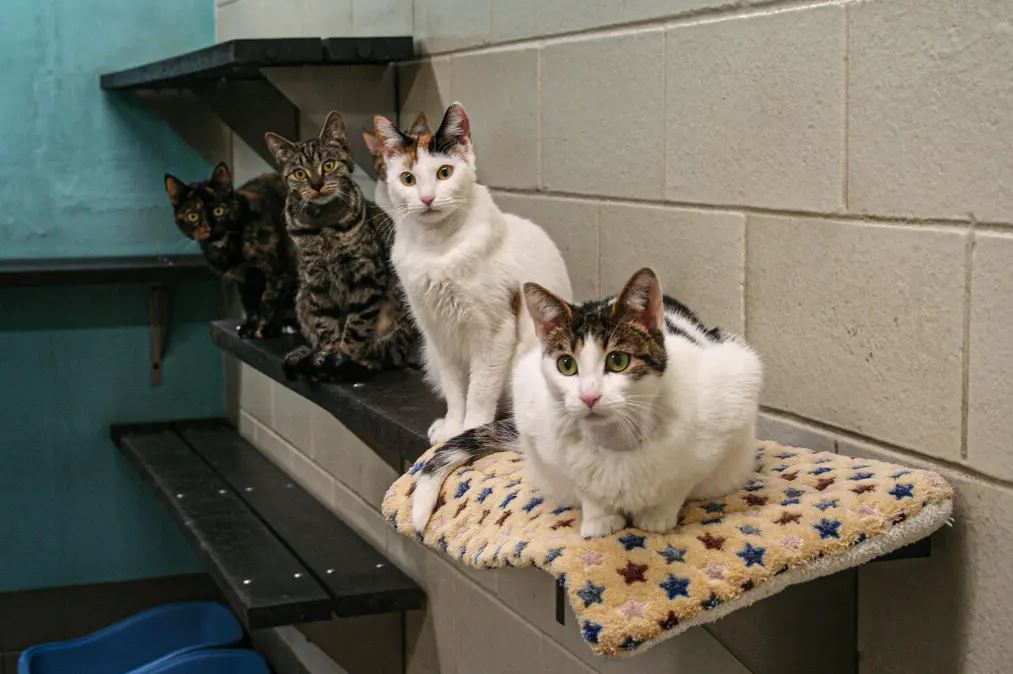There is a large underworld of stray cats, a wide and rapidly reproducing throng that exists alongside the domesticated cats we share our homes with.
They have to worry about being exposed to contagious illnesses, dangerous animals, and speeding vehicles every day of their life. They also kill millions of birds and small animals every year, making them a significant predator.
A large number of American volunteers are actively involved in capturing the cats, transporting them to clinics for surgical sterilisation, and then releasing them back into their colonies. However, it may be expensive and difficult to manage a large population of stray cats. There is a dearth of veterinary and economic resources to organise such initiatives in many areas, particularly in nations outside of the United States and Europe.
It’s possible that such a strategy is on the horizon. A single injection of a gene therapy shown to be effective in preventing pregnancy in cats for at least two years was published Tuesday in the journal Nature Communications. Six female cats were given the gene therapy injection and compared to three that were not, therefore the trial was rather tiny.
Dr. Swanson said that the small sample size allowed for in-depth tracking of each cat, including the analysis of 15,220 freeze-dried excrement samples for oestrogen and progesterone levels and the review of 1,200 hours of film of mating behaviour.
The gene from the contraceptive injection reaches muscle cells and stimulates the production of anti-Müllerian hormone (AMH), which prevents the ovaries from forming egg follicles.
The researchers stressed the necessity for more testing of the early results. Dr. Swanson predicted that the surgical skills of veterinarians would no longer be necessary to regulate cat populations if bigger trials confirmed the treatment — the first gene therapy created exclusively for animals — was safe and successful during a cat’s lifespan.
Reproductive scientist David Pépin from Boston’s Massachusetts General Hospital set out to examine AMH’s impact on ovaries while researching the hormone’s potential as a therapeutic for ovarian cancer. AMH may have contraceptive qualities, since its injection into mice caused their ovaries to shrink to neonatal size.
Dr. Pépin is looking into the possibility of using AMH in humans, however not in the form of gene therapy but rather as a pill or injection that would need to be taken regularly. Most modern birth control methods work by preventing eggs from being released, whereas AMH would intervene earlier to stop follicles from developing.
He believes it might be helpful for women who are unable to take birth control tablets containing progesterone or oestrogen, or who are undergoing cancer treatment and want to maintain their fertility.
Permanent gene therapy with AMH in humans is quite improbable. But it’s the ideal method for reducing the number of cats in the world, he added. Two female cats in the research mated with male cats but did not ovulate, while four female cats did not exhibit behaviours suggesting they were ready to mate.
Dr. Pépin and Dr. Swanson, an expert in feline reproduction (and a member of the scientific advisory board of the Michelson Found Animals Foundation, which funded the work), are planning a larger study that may help them apply to the FDA for approval to market the therapy for use in cats.
Dogs, like cats, have huge stray populations, especially in foreign countries, thus the treatment is also being tested on them. Treatment may begin as early as eight weeks of age.
She did note, however, that further research was needed to answer questions like how long the shot’s effects persist, if they are genuinely as safe as they seem, and what percentage of cats it would actually prevent against pregnancy, “because it probably won’t be 100 percent.”
Others point out that it may not be so simple. Veterinarian Autumn Davidson from Cornell University’s College of Veterinary Medicine in Ithaca, New York, thinks the injection might be extremely useful if it’s successful, lasts a long time, and costs less than spay and neuter surgery. However, animals need to be trapped in order to get the injection, which might be difficult if the queens are skilled at dodging human traps.

